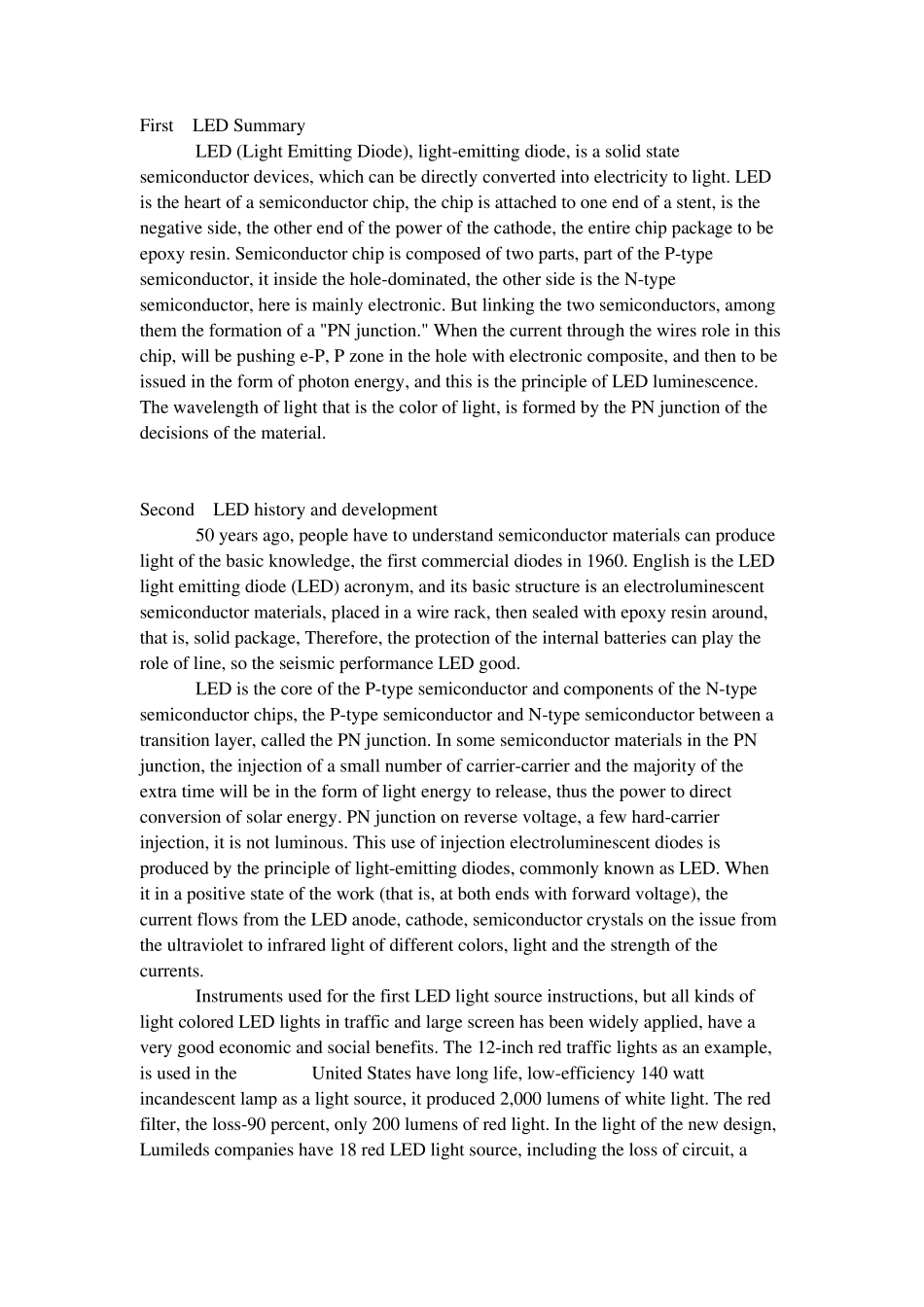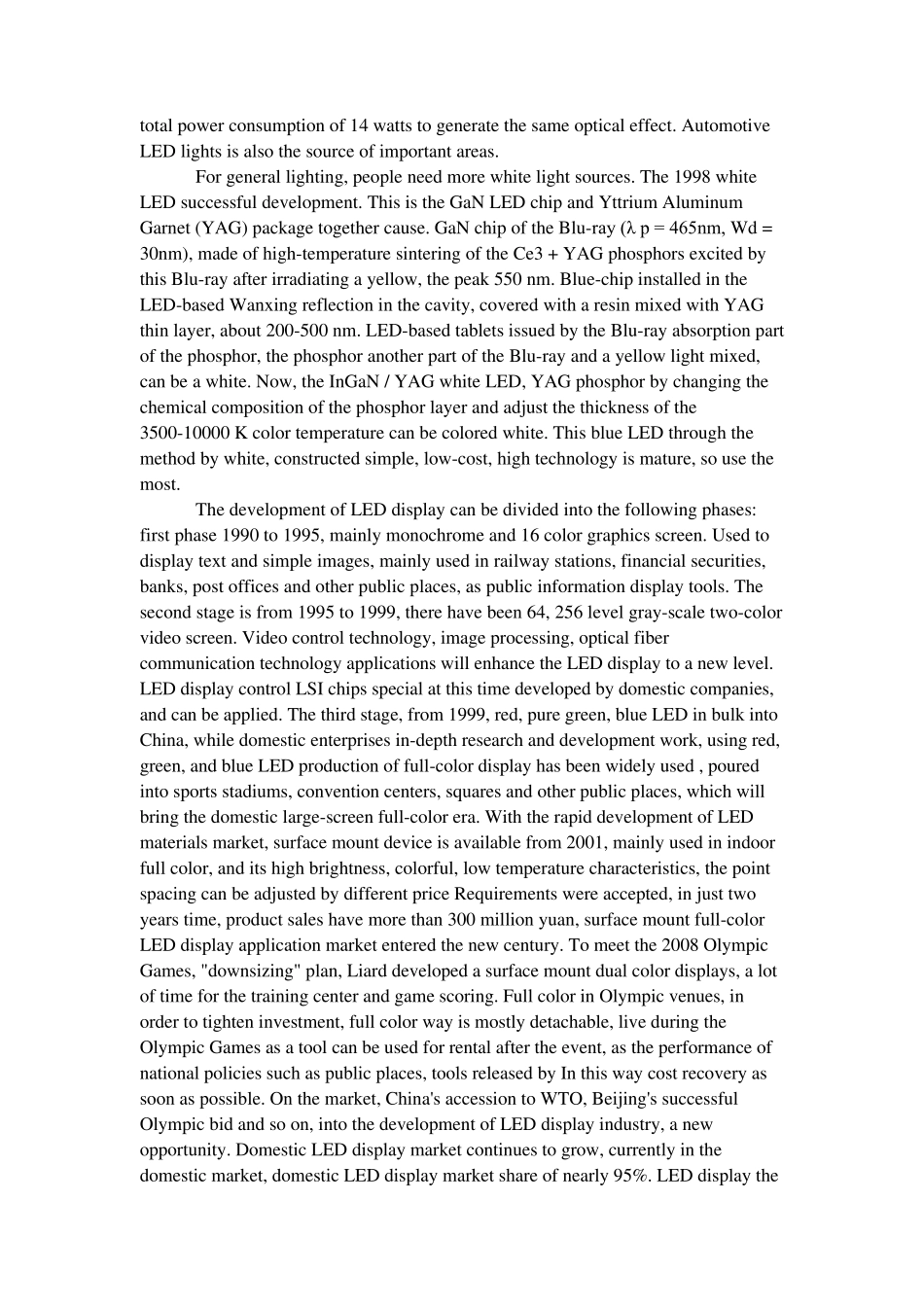First LED Summary LED (Light Emitting Diode), light-emitting diode, is a solid state semiconductor devices, which can be directly converted into electricity to light. LED is the heart of a semiconductor chip, the chip is attached to one end of a stent, is the negative side, the other end of the power of the cathode, the entire chip package to be epoxy resin. Semiconductor chip is composed of two parts, part of the P-type semiconductor, it inside the hole-dominated, the other side is the N-type semiconductor, here is mainly electronic. But linking the two semiconductors, among them the formation of a "PN junction." When the current through the wires role in this chip, will be pushing e-P, P zone in the hole with electronic composite, and then to be issued in the form of photon energy, and this is the principle of LED luminescence. The wavelength of light that is the color of light, is formed by the PN junction of the decisions of the material. Second LED history and development 50 years ago, people have to understand semiconductor materials can produce light of the basic knowledge, the first commercial diodes in 1960. English is the LED light emitting diode (LED) acronym, and its basic structure is an electroluminescent semiconductor materials, placed in a wire rack, then sealed with epoxy resin around, that is, solid package, Therefore, the protection of the internal batteries can play the role of line, so the seismic performance LED good. LED is the core of the P-type semiconductor and components of the N-type semiconductor chips, the P-type semiconductor and N-type semiconductor between a transition layer, called the PN junction. In some semiconductor materials in the PN junction, the...


